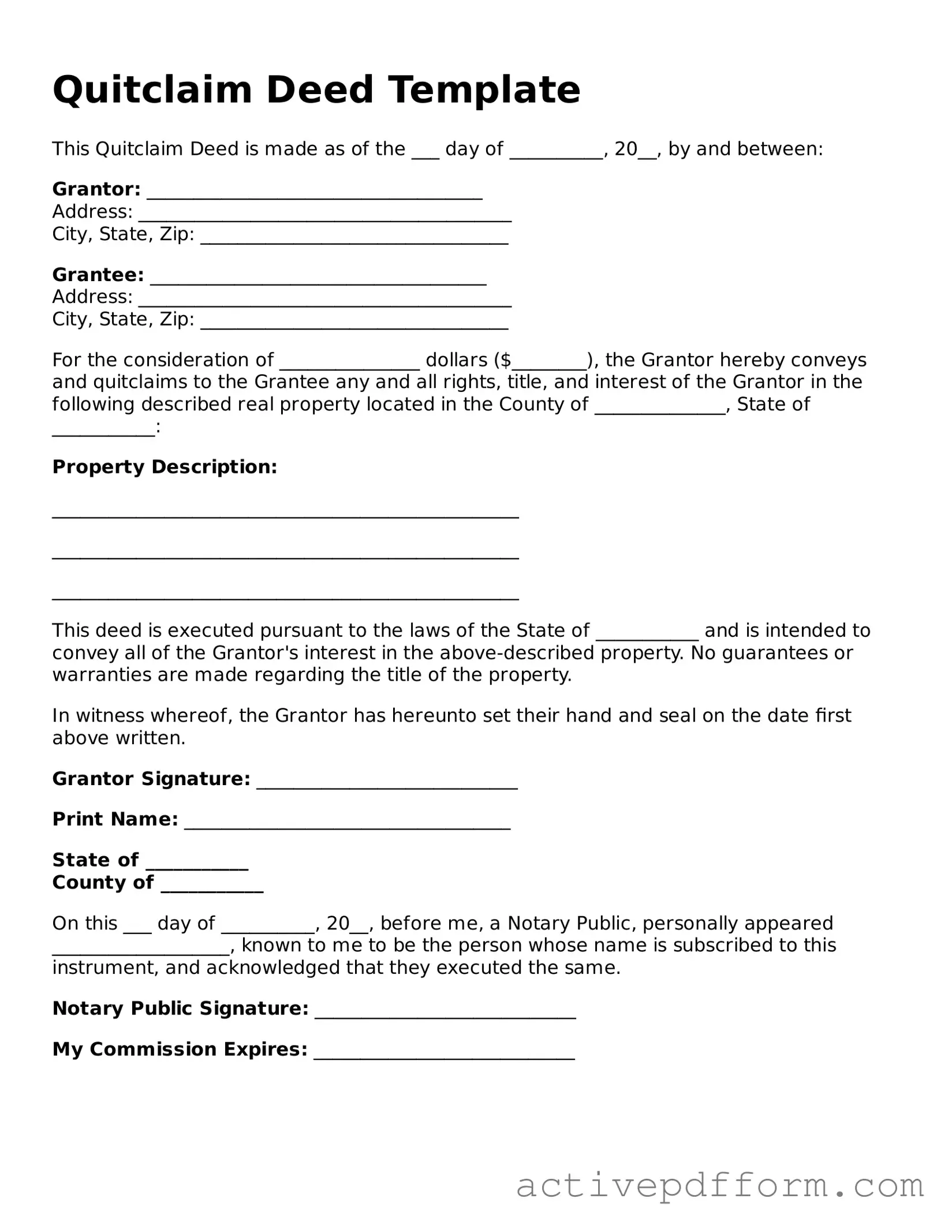Quitclaim Deed Template
This Quitclaim Deed is made as of the ___ day of __________, 20__, by and between:
Grantor: ____________________________________
Address: ________________________________________
City, State, Zip: _________________________________
Grantee: ____________________________________
Address: ________________________________________
City, State, Zip: _________________________________
For the consideration of _______________ dollars ($________), the Grantor hereby conveys and quitclaims to the Grantee any and all rights, title, and interest of the Grantor in the following described real property located in the County of ______________, State of ___________:
Property Description:
__________________________________________________
__________________________________________________
__________________________________________________
This deed is executed pursuant to the laws of the State of ___________ and is intended to convey all of the Grantor's interest in the above-described property. No guarantees or warranties are made regarding the title of the property.
In witness whereof, the Grantor has hereunto set their hand and seal on the date first above written.
Grantor Signature: ____________________________
Print Name: ___________________________________
State of ___________
County of ___________
On this ___ day of __________, 20__, before me, a Notary Public, personally appeared ___________________, known to me to be the person whose name is subscribed to this instrument, and acknowledged that they executed the same.
Notary Public Signature: ____________________________
My Commission Expires: ____________________________
